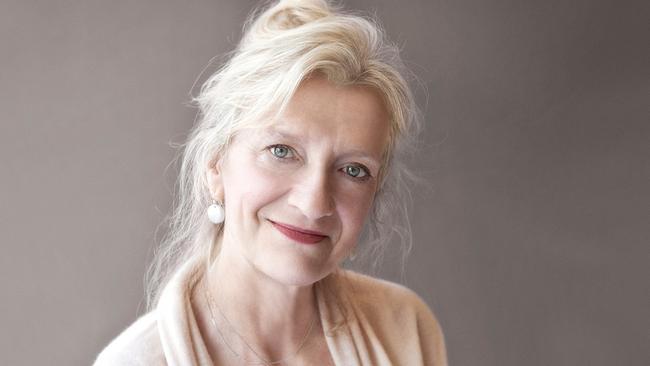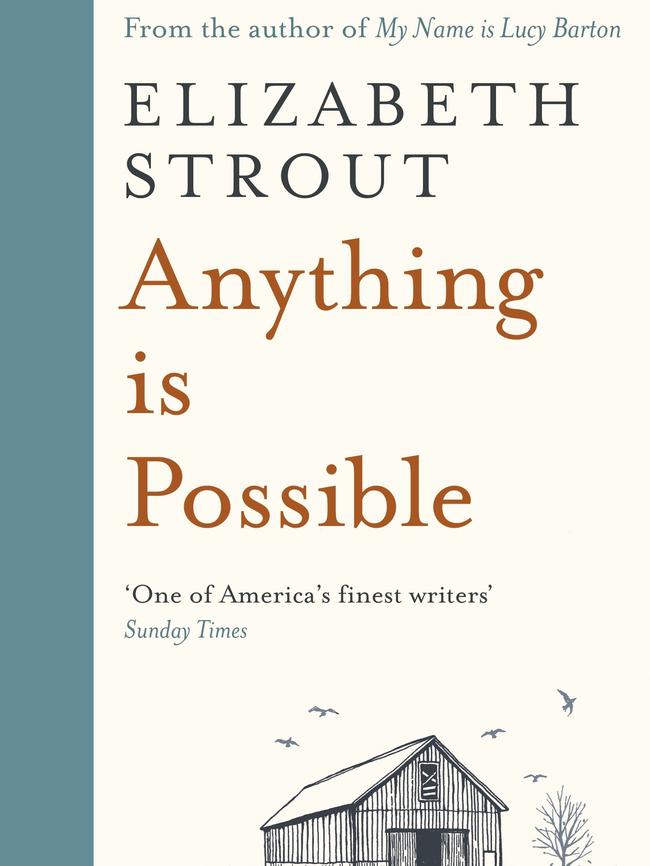Lucy Barton returns in Elizabeth Strout’s Anything is Possible
Elizabeth Strout again proves in this book of interwoven short stories that nothing is off limits in her writing.

Midway through this magnificent book of interwoven short stories, Lucy Barton, the narrator of Elizabeth Strout’s 2016 novel, My Name is Lucy Barton, returns to Amgash, Illinois, to visit her brother for the first time in 17 years.
That novel hinted at an abject childhood but in this new story, Sister, we learn it was far worse than Lucy intimated in her “memoir”. Whereas My Name is Lucy Barton was characterised by strategic silences, this collection, Anything is Possible, digs deep into the psychological marrow of its characters.

In her “memoir”, Lucy alluded to her father’s debilitating anxiety but here we learn her mother was “the really dangerous one”. Lucy has asserted: “A writer should write only what is true.” But when her two siblings exchange anecdotes about their childhood, including an incident when her mother cut up her sister’s clothes as punishment for crying, Lucy descends into a panic attack that subsides only when she departs, leaving the truth of her miserable childhood behind.
In Windmills, Patty Nicely compares reading Lucy’s memoir with the private pleasure of having butterscotch “tucked inside the back crevices of her mouth”, a description that applies as easily to this book. By dissolving the boundaries between her two books and between herself and Lucy, Strout is declaring her interest not so much in creating characters to use for her narrative ends as delving into the idea of what character is. Her stories are deeply concerned with how personality is formed.
In Hit Thumb Theory, Charlie, a Vietnam war veteran, makes “sounds without planning to” and can’t tolerate his wife’s “nauseating softness”. He meets Tracy, a prostitute with whom he is involved in a long-term affair, but on this occasion she seeks $10,000 to pay her son’s drug debt. The affair is born of a series of deceits, one nested inside the other: Charlie meets and falls in love with “Robin”, who reveals her true name is “Tracy” when the two fall in “love”. In the claustrophobic atmosphere of the hotel room, we learn Tracy is not her real name, her licence is fake, as is the affair designed to lure Charlie into a false intimacy.
The stories in Strout’s 2008 Pulitzer prize-winning Olive Kitteridge were united by their main character, who appeared in or influenced each story. What links Anything is Possible is Strout’s omniscient narrator, hovering above and delving into her characters’ minds. In Snow Blind, Annie Appleby, a woman who left Amgash as a young woman to pursue a theatrical career and is now approaching middle age, considers giving up acting and “going normal”.
“But what would she do with all these feelings that streamed down her like small rivers?” It’s not difficult to infer this observation may apply to Strout herself; her characters are moulded from intensely personal emotions. Strout’s omniscient narrator stitches her stories together through recurring characters and imagery. Patty tells us: “This was the skin that protected you from the world — this loving of another person you shared your life with.” Annie, as a child, picks up on this idea, innocently comparing the protective quality of family with the casing of a sausage. Strout is also deeply concerned with class or, as one character puts it, “the astonishing power of money”. Many characters come from deprived backgrounds, some have shunned money, others have let it dictate their lives. Moreover, each is united by an abiding shame.
In Cracked, Patty’s sister Linda lives in an “inspired” architecturally designed house with Alexander Calder sculptures in the garden and an Edward Hopper painting on the wall. Linda and her husband invite a photographer named Yvonne Tuttle to stay with them. When Yvonne flees the house naked in the middle of the night, the focus pivots to Linda’s complicity with her husband’s perversions. “It started as a private game,” Linda says, “a way of breaking domestic boredom.”
This type of manoeuvre is defining of Strout’s work: she sets up our expectations for one type of story, only to send it veering towards more dangerous territory. Her power as a writer is that she might, and does, go anywhere; nothing is off limits. Anything is Possible attests to the workmanship invested by Strout in getting us to not notice her prose. This is the technique that makes her metaphors jump out, resonating like struck bells. The moment Charlie hands money over to Tracy he tells us the envelopes “had the bulky softness of flesh”. Though it may be the effect, Strout’s intention isn’t to dazzle: she’s interested in capturing the deeply ambivalent experience of living and, more often than not, it’s her exquisite metaphors that take us there.
In this rural setting, Strout is closer than ever to the great short story writer Alice Munro. Yet Strout’s observations about life are sharper in definition than Munro’s and she’s much more concerned with probing her characters’ private wounds. This is what makes reading Strout a vertiginous experience: her willingness to drop you into unsettling truths.
There are moments of dark comedy, the type that comes from unflinching honesty. Alongside deep tenderness: a mother tells her estranged daughter that she recognised her at birth. “Oh, it’s you,” she thought, and, “It didn’t even seem surprising.” Mostly these stories attest to the terrible cruelty of life, but in those dark places, the moments of kindness and connection cast off an incredibly brilliant light.
Gretchen Shirm is an author and critic.
Anything is Possible
By Elizabeth Strout
Penguin, 272pp, $29.99



To join the conversation, please log in. Don't have an account? Register
Join the conversation, you are commenting as Logout